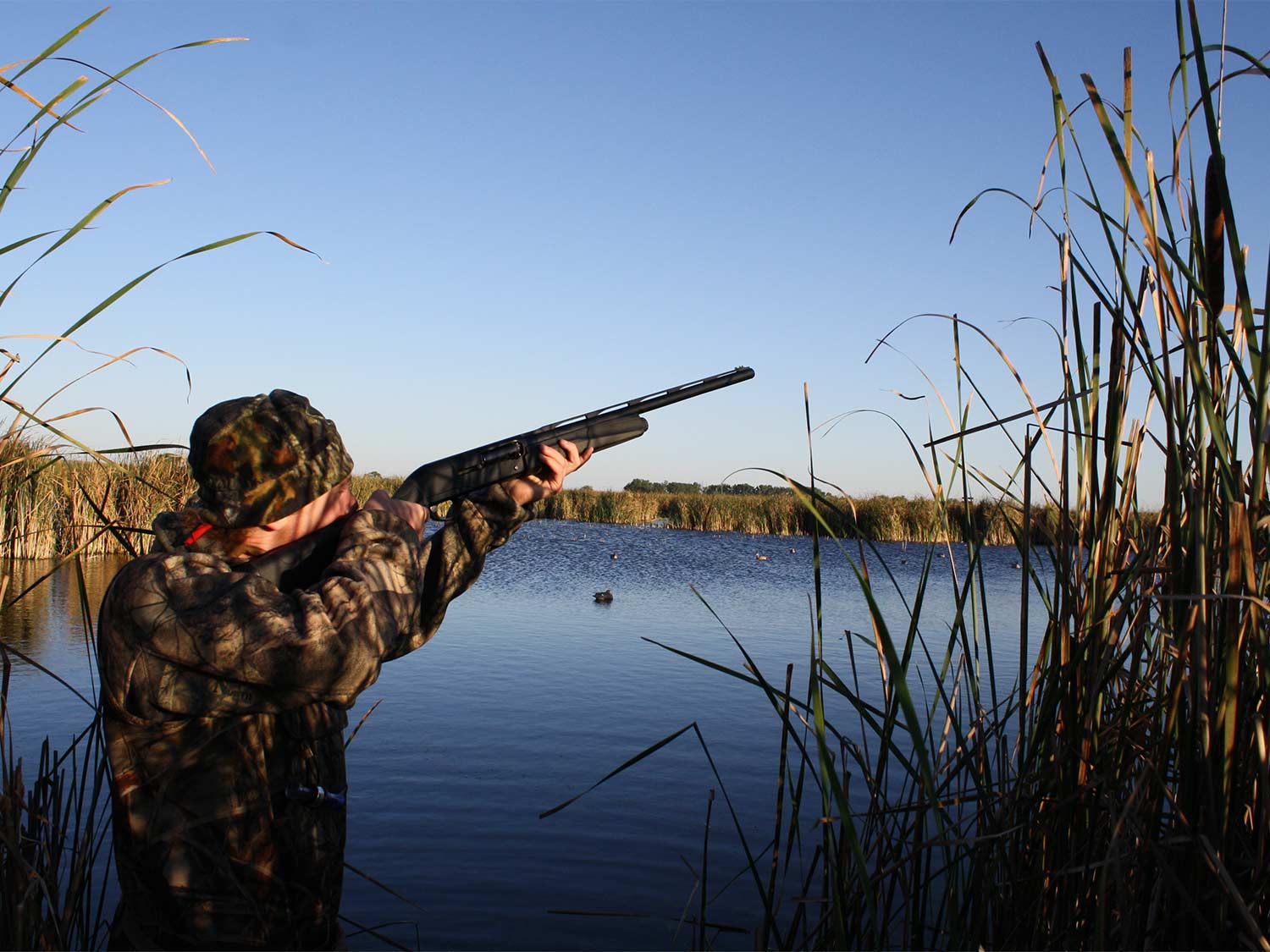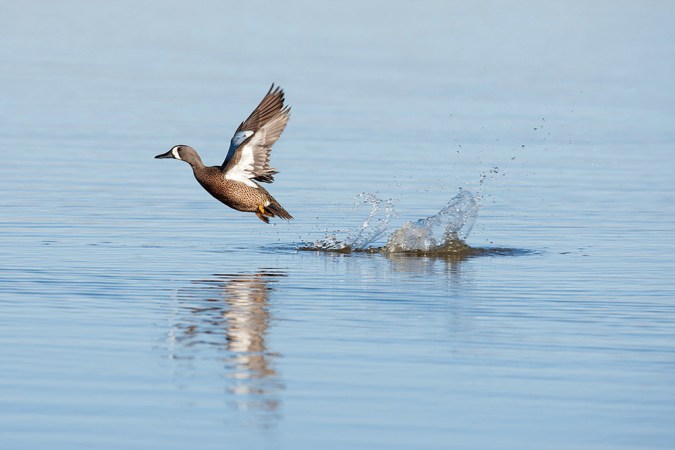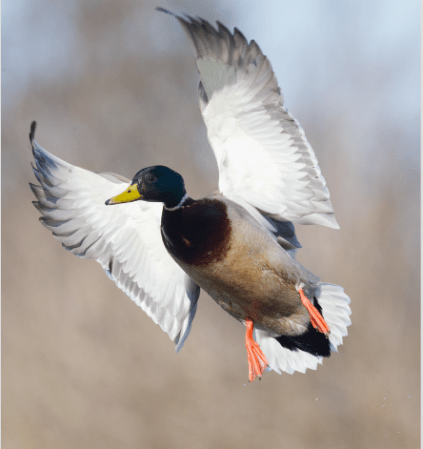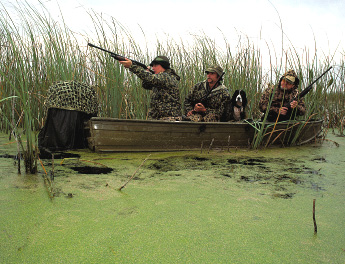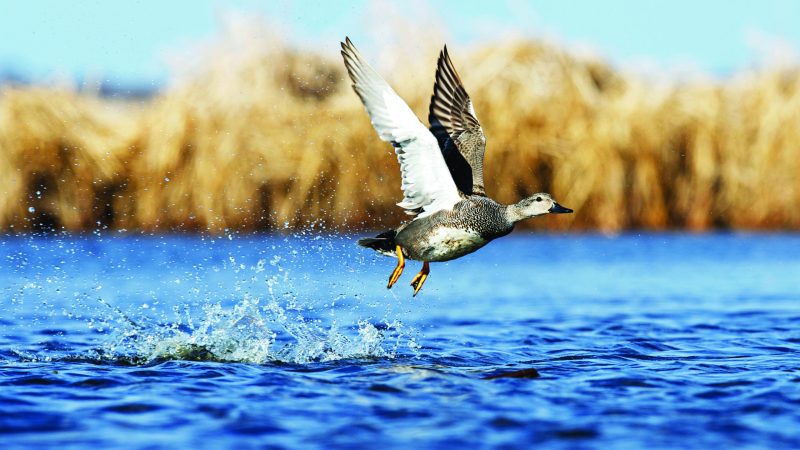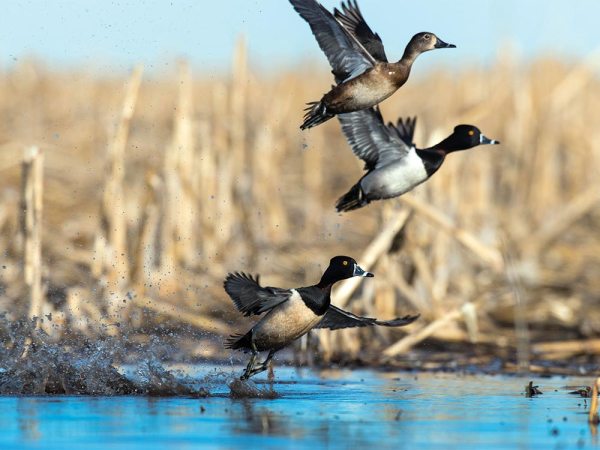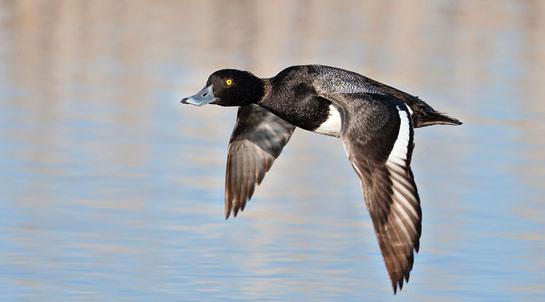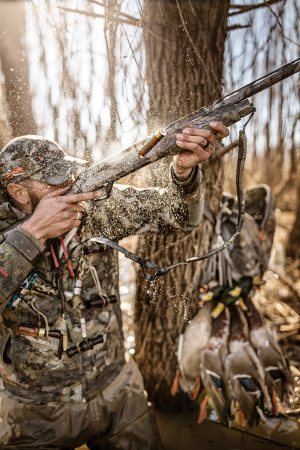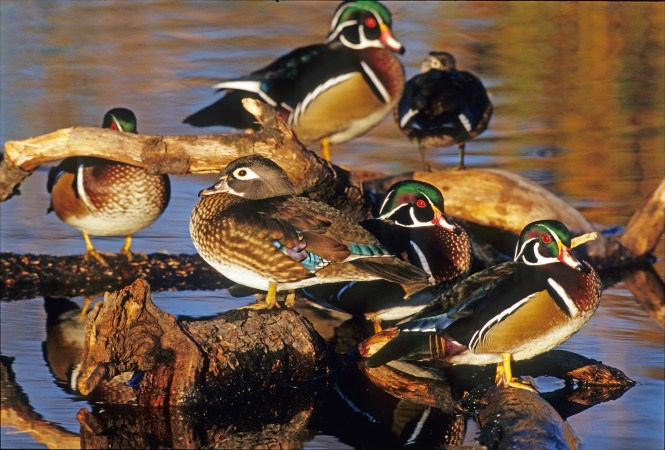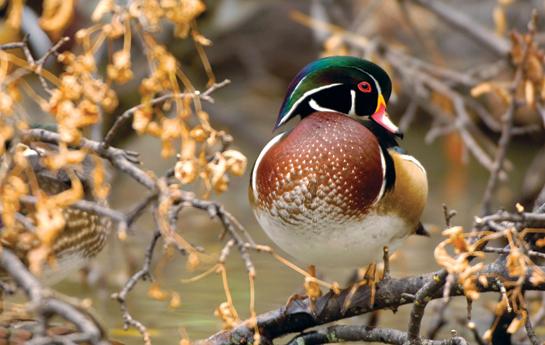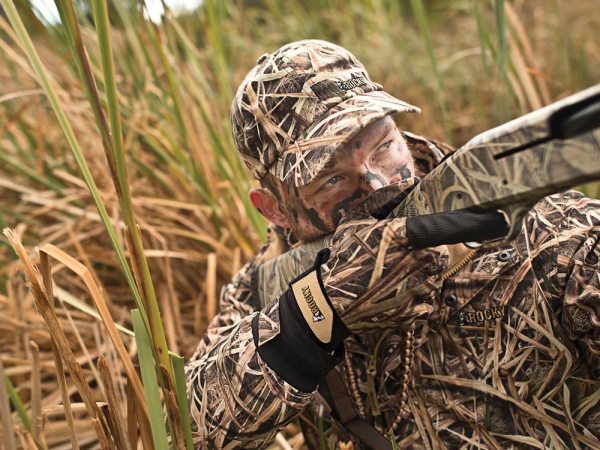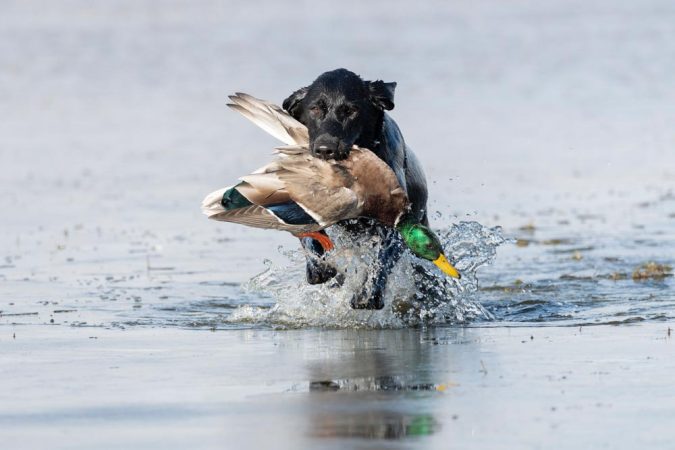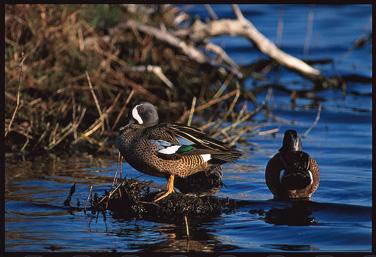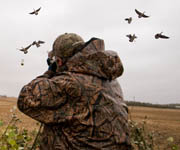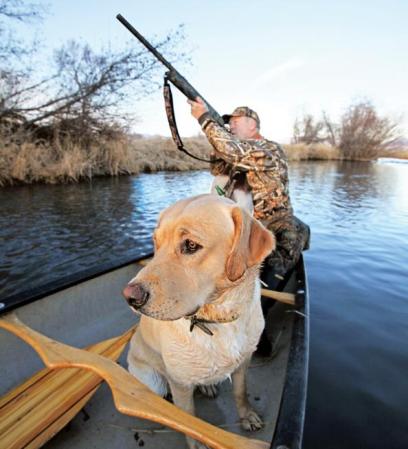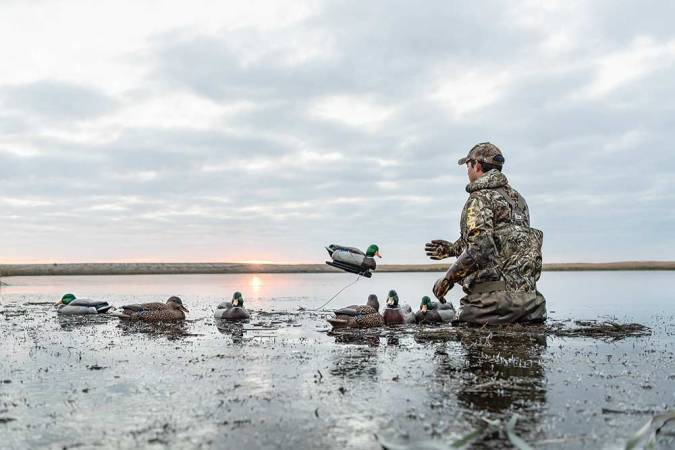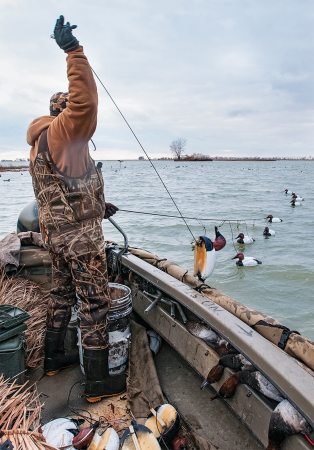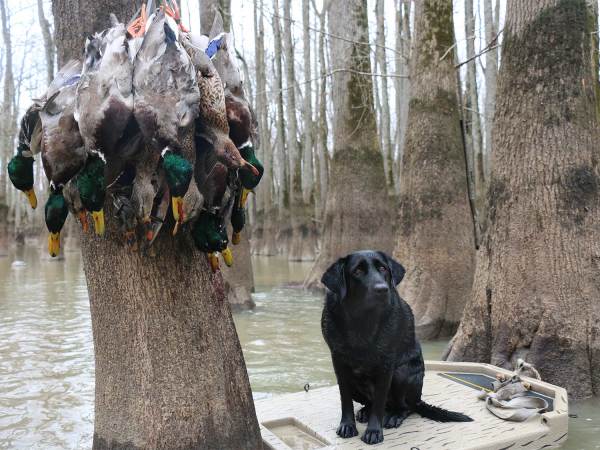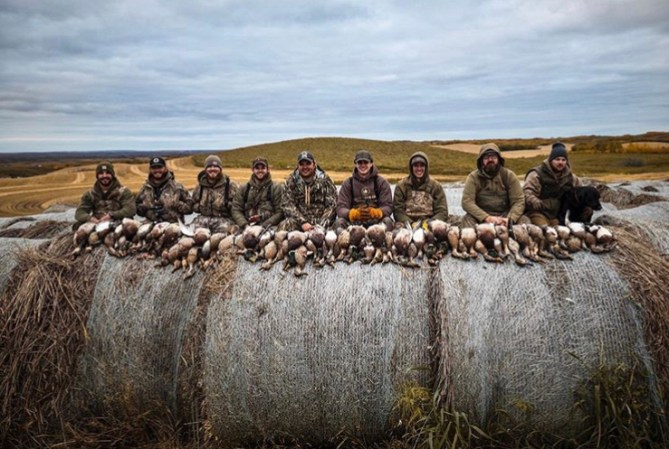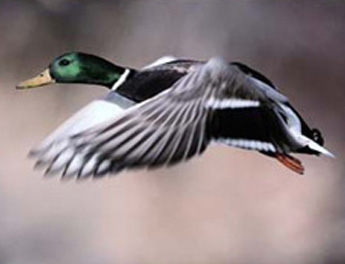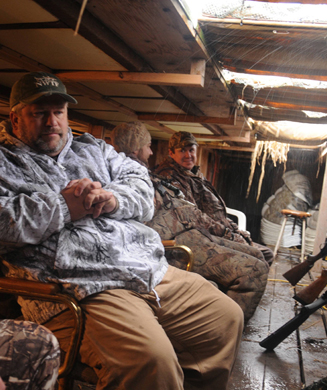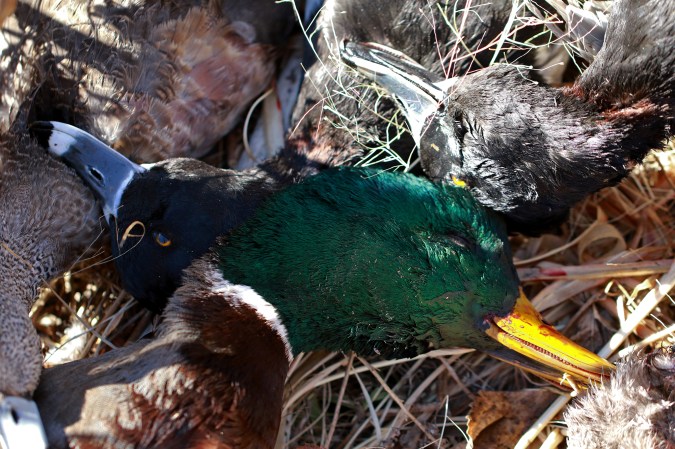I am a potholing duck hunter at heart. My duck hunting muses reach their happiest when I’m walking by starlight down some prairie two-track, across a hayfield or cow pasture, or through the timber with a bag of decoys slung over my back and a shotgun in hand as I head toward the possibilities of some forgotten little pothole, pond, or puddle.
Often that’s just where the ducks want to be, for seclusion or food or both, and the only way to get there is to pack light and hike in. You don’t need a boatload of gear and a complex strategy to kill ducks. Potholing is a great way to get started in duck hunting. And because the water is small and shallow, you can even do it without a dog. So, Put on a pair of waders, grab some decoys, clip on a shell belt and a call lanyard, and head out to some small, secluded water.
Secluded Places to Find Ducks
Everywhere ducks are hunted, small pothole water dots larger marsh complexes, and these hidden hideaways are right where pressured ducks go. The definition and presentation of small water varies by region:
- On The Prairie: potholes (also called sloughs) are small, shallow ponds or wetlands that are usually ringed by a cattail transition zone between the water and the grassland or cropland that lies beyond.
- In The Northwoods: “Potholin'” is often done on beaver ponds or other backwoods waters fringed by forest, sedge, and meadow.
- In The West: Stock tanks, cattle watering holes, and spring creeks comprise the small-water opportunities.
- In The East and Midwest: look to farm ponds, creeks, and drainage ditches.
- In the South: think secluded backwater sloughs and streams.
Mobile and versatile are the watchwords for success on any pothole hunt. Here’s your 5-step guide to potholing it successfully:
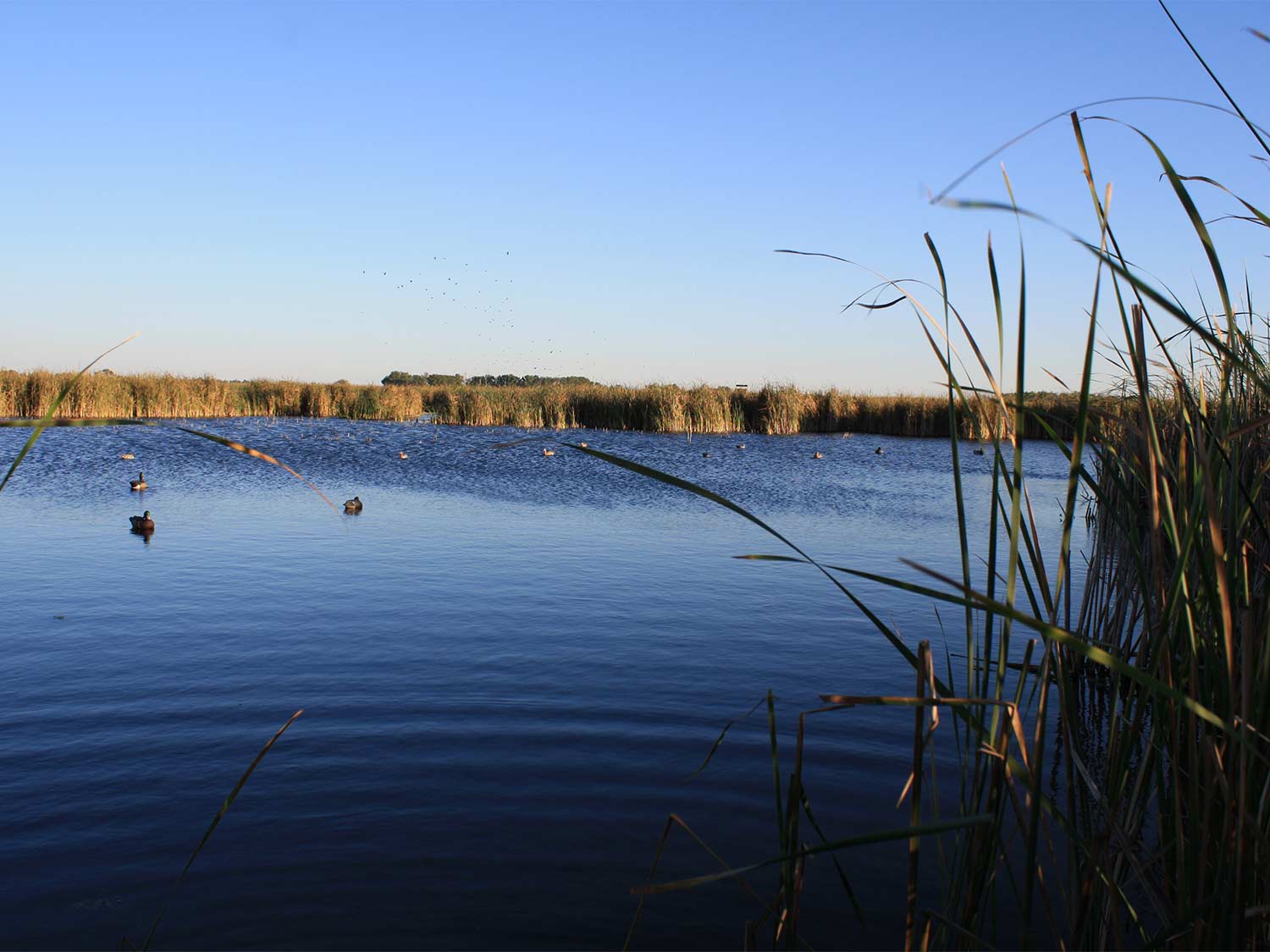
1. Scout Hard and Smart
Setting up at some random pothole—be it a prairie slough, a high plains stock tank, a fir-fringed beaver pond, or a backwater oxbow—will not automatically produce reliable results. The first step to potholing success is knowing you are hunting a place where the birds want to be. That means scouting.
In open country, a vehicle and a good pair of binoculars are your best scouting tools. Look for ducks dropping into out-of-the-way waterholes during late afternoon—especially after the sun has gone below the horizon and the ducks are on their dusk flight. In wooded country or anywhere with lots of cover, sneak toward the small water you know of (ponds, sloughs, or potholes in wetlands) and listen for ducks on the water.
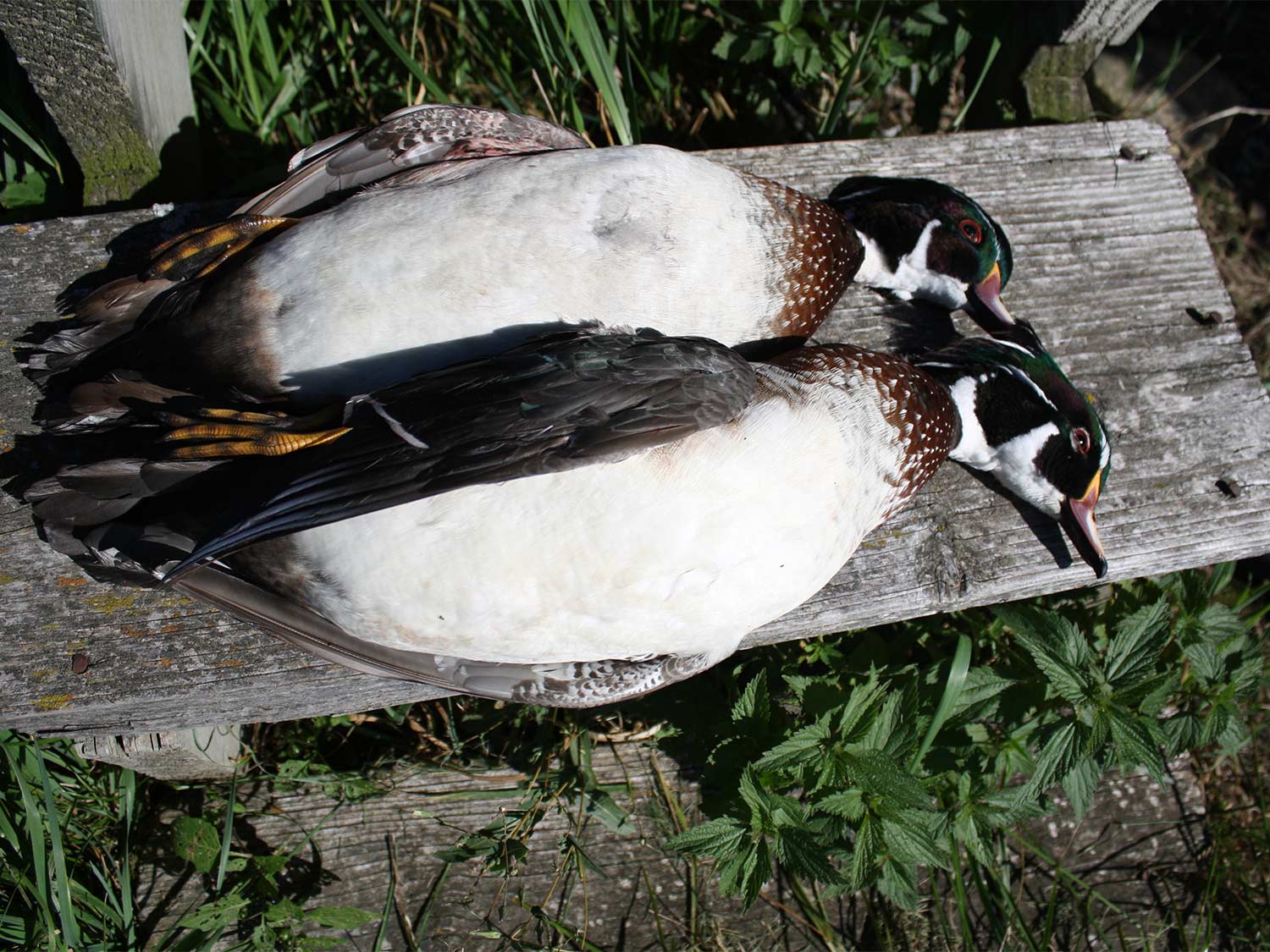
When I scout wood duck holes in the Minnesota River bottoms near my home, my ears are my best tools. Woodies are generally too spooky to approach for a peak: If I can see them, they can see me, and off they go. Fortunately, relaxed wood ducks just doing their thing make all kinds of peeps, squeals, and whistles. Auditory confirmation is all I need.
Stay on the lookout for good potholing opportunities during your other sporting endeavors. One of the best small-water honey holes I ever hunted was a teal-filled Nebraska dugout pond that I found in the Missouri River Breaks while turkey hunting one spring. It has become a reliable wood duck and teal hole in autumns since.
2. Build a Potholer’s Kit
The very essence of potholing is traveling light and keeping your gear list simple. Challenge yourself to think twice if you want to add something beyond what’s on the list below. The whole idea is to stay nimble and mobile, so you can get into secluded spots where the ducks feel safe but other hunters are not willing to go.
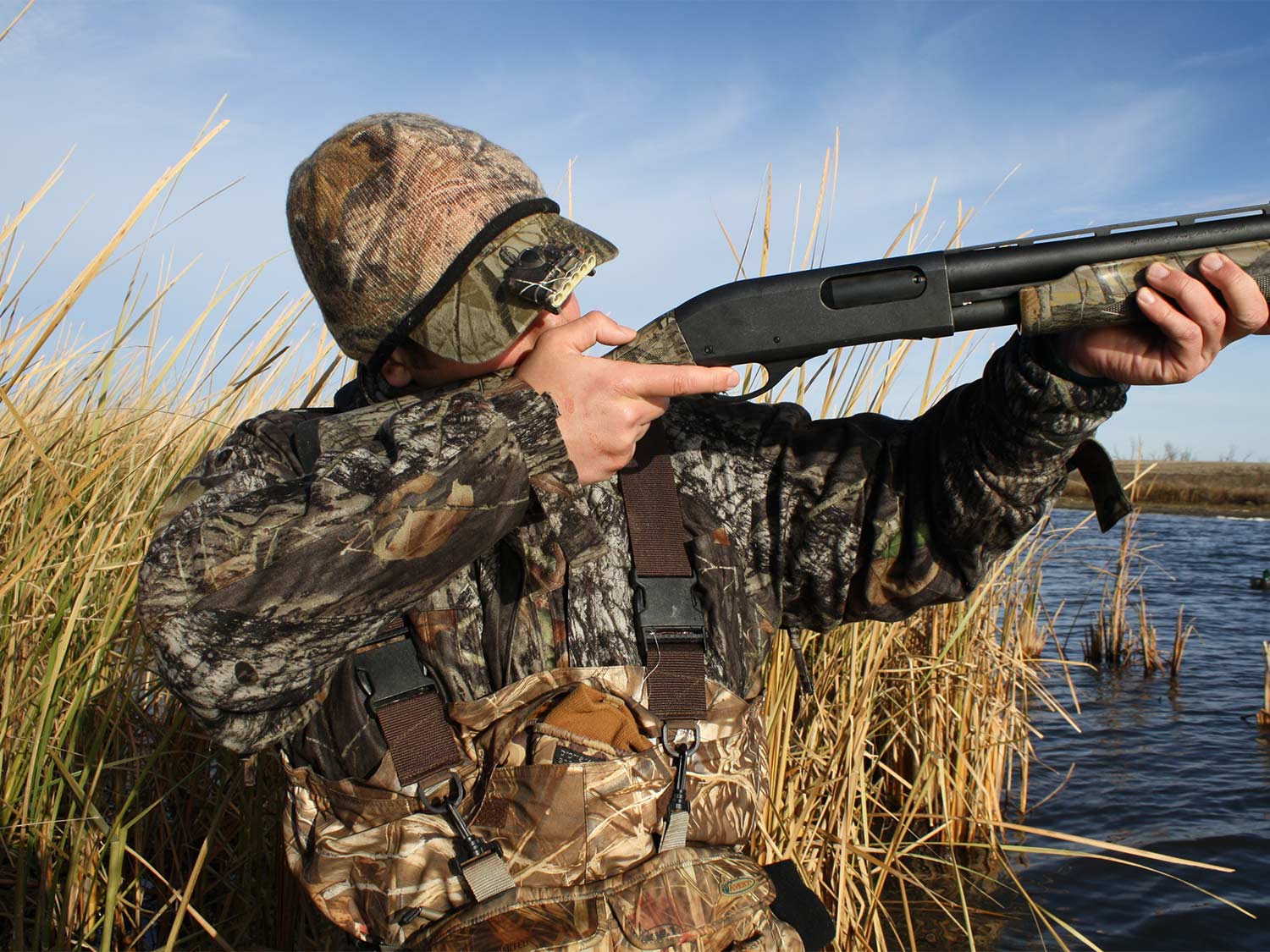
Here’s what you need to start hunting ducks in small water:
- Shotgun
- Shells (in shell belt or pouch)
- Waders or hip boots
- Lanyard with no more than 3 duck calls (mallard call, teal call, wood duck call)
- Duck strap (in a wader pocket, to carry out your ducks)
- Sack of decoys (for mix, see notes following)
A dozen or so blocks is a good number, but I like to use an odd number, so add one more decoy for a total of 13. But you don’t have to pack, or use, all your decoys. If the spot is really tiny, six or seven decoys can be plenty.
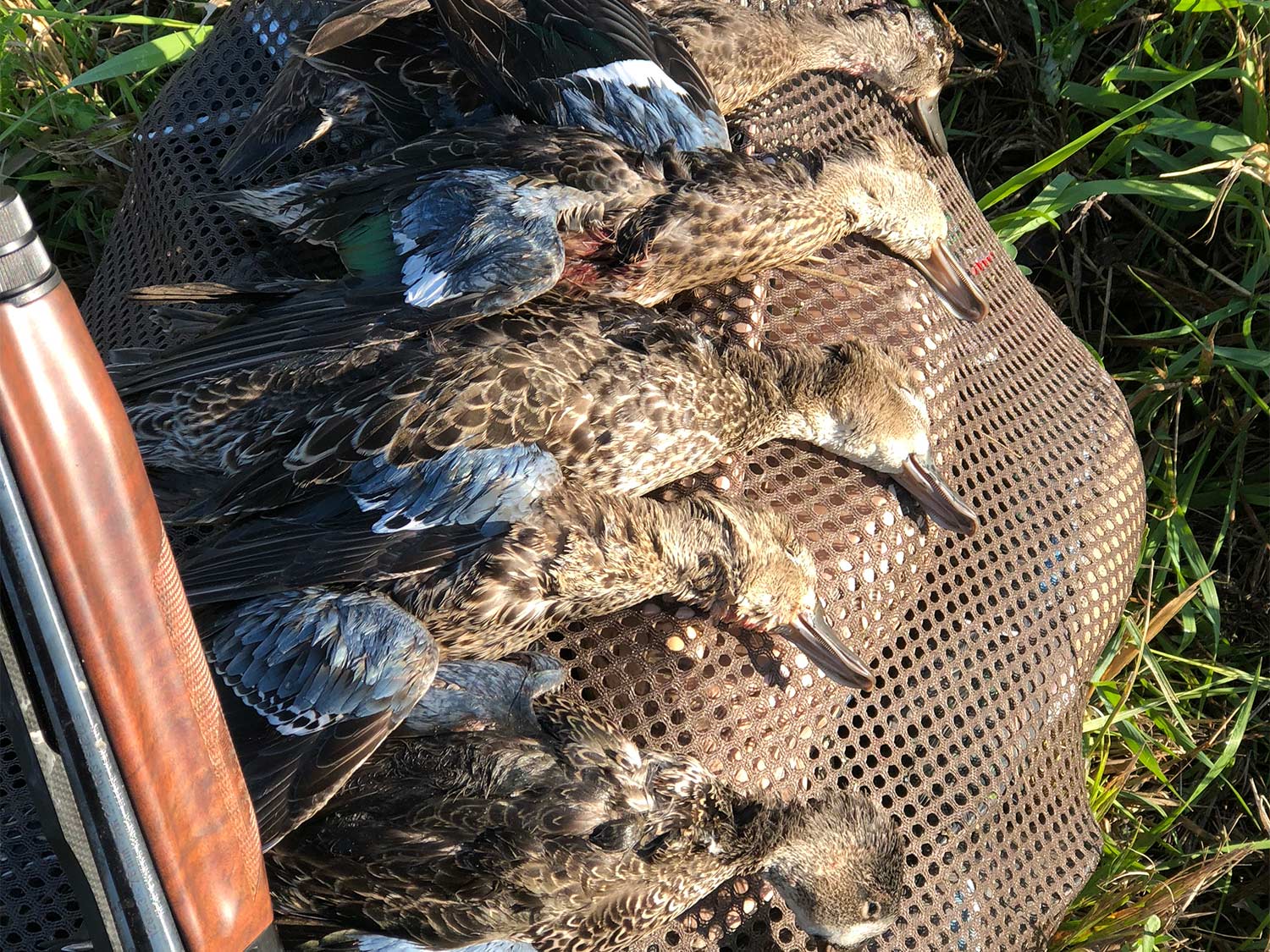
Keep things ultra-simple for the makeup or mix of your spread: All mallards, both drakes and hens, works great. Most ducks trust the cautious nature of mallards, and other species willingly settle into holes that appear to have some wary greenheads swimming around.
If you like a little variety, a mixed sack of mallard, wood duck, and teal decoys works well. Later in the season, when some divers might be around, replace the teal with a couple of ringbill decoys; the drakes’ white sides serve as great attractors.
3. Set Your Decoy Spread
The trick to making a good small water spread is attracting ducks without crowding out potential places for them to land.
Some potholes are almost mere puddles, such as one 15-yard by 20-yard teal hole I like to hunt in western Minnesota. Seven or nine decoys, sparsely spread out, both look natural and leave plenty of landing zones in places like this.
Other potholes have a little more maneuvering room for traditional-style spreads.
One pothole in my native countryside along southern Wisconsin’s Pecatonica River is a narrow but long oxbow slough. I set up right on the bend, with a pod of decoys on either side and an inviting, open spot for the real ducks to land right out front.
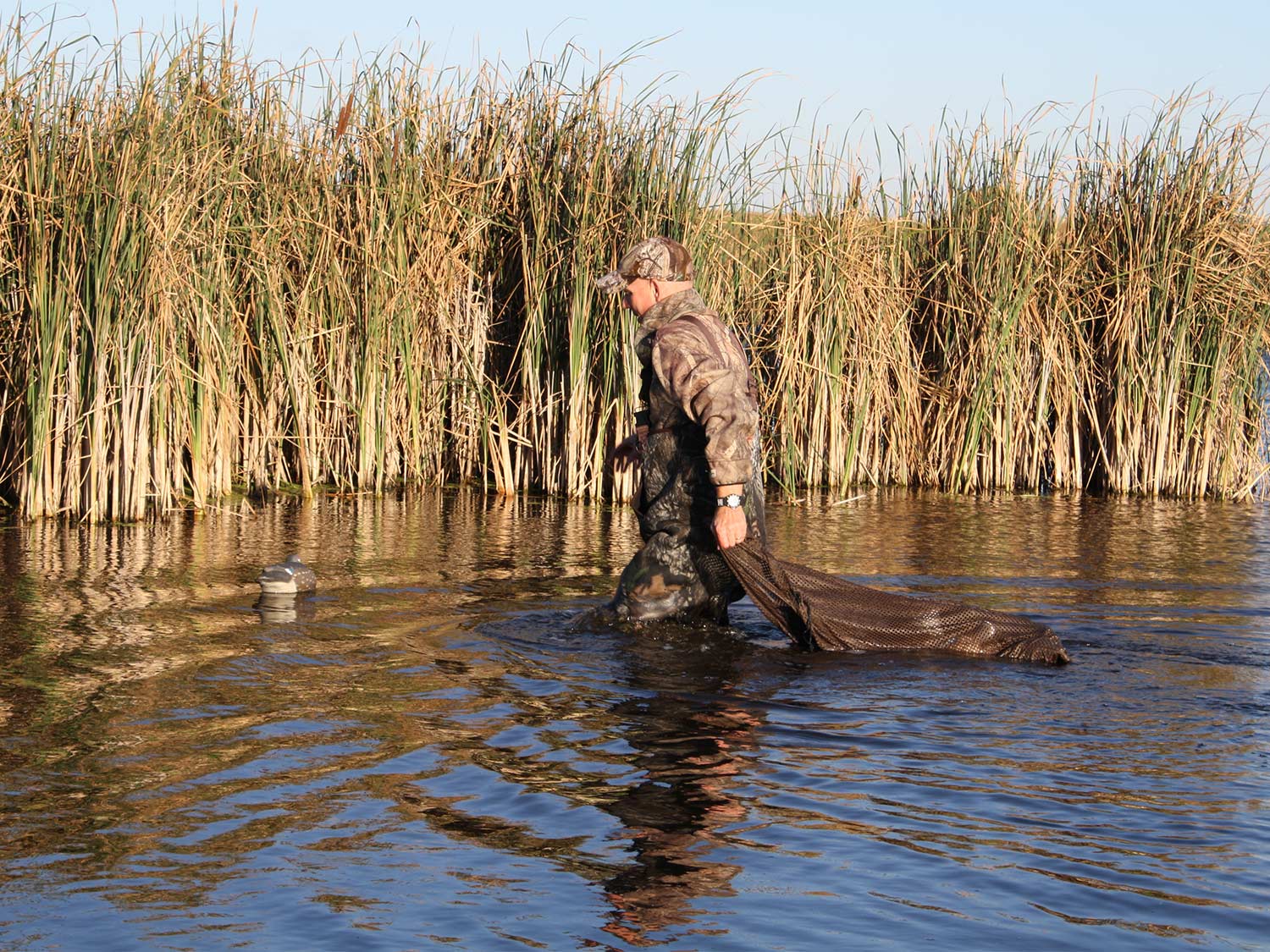
When wood ducks are the target, put a few decoys out in the open, but be sure to keep some blocks right on the edge of cover, with some swimming right into flooded grass, cattails, or brush. This simulates the cover-loving behavior of real woodies.
On potholes, take care of all those pesky little details that are easy to ignore. One must-have accessory that doesn’t weigh anything is a facemask to hide your moon-pie face in the close quarters of a pothole hunt. Wear light gloves to cover up your hands too, just like a turkey hunter, when it is warm out. The flash of either your bare face or hands will flare ducks.
4. Solve the Calling Conundrum
Calling is always a conundrum. If you’ve done your scouting and are set up where the birds want to be, a few decoys by themselves will often bring ducks in. Why risk spooking them with some calling that isn’t to their liking? If the birds look committed (and pothole birds often make up their minds, circle little, set their wings, and swoop right on in), why risk calling?
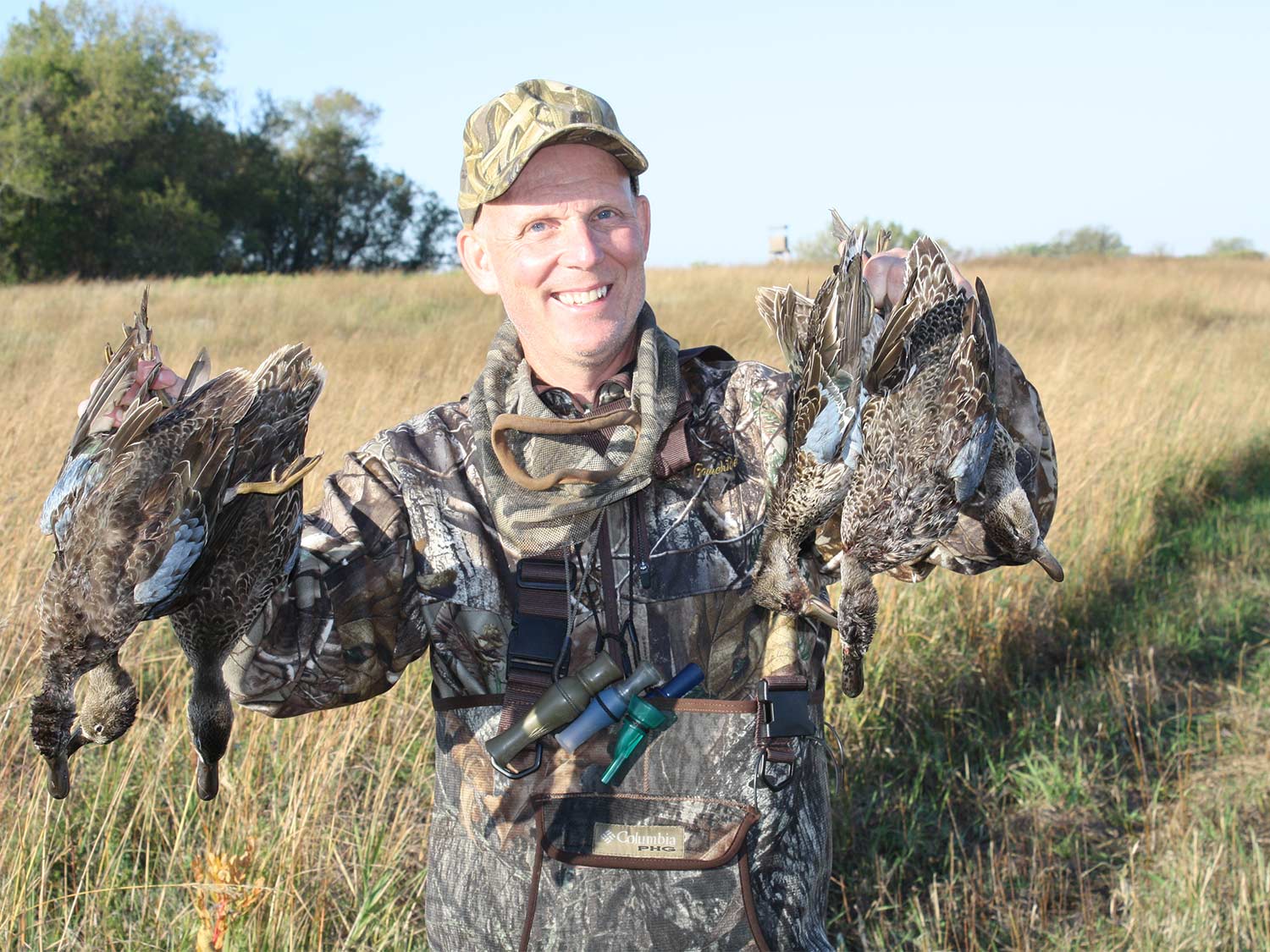
That said, don’t hesitate to pour it on to passing ducks that don’t look interested. Singles are especially vulnerable to calling coming from a secluded hideaway. Occasionally you’ll have “hesitators,” and that’s when a few subtle and judicious quacks, clucks, chuckles, whistles, or squeals can convince them to commit.
5. Stay Mobile and Versatile
When hunting the prairies of South Dakota, North Dakota, and western Minnesota, where potholing opportunities abound for everyone (and I do much of my own small-water freelancing on public land and water), mobility and versatility are the two keys to success. But those principles apply everywhere ducks fly.
Mobility: It’s essential. You need to cover some countryside to find the small water that holds ducks. And while scouting has ideally revealed the best place to start hunting, a small patch of water can get shot out quickly, then not produce at all. That means it’s time to pack up and go. With a light load of gear, a pothole hunter can do just that in short order.
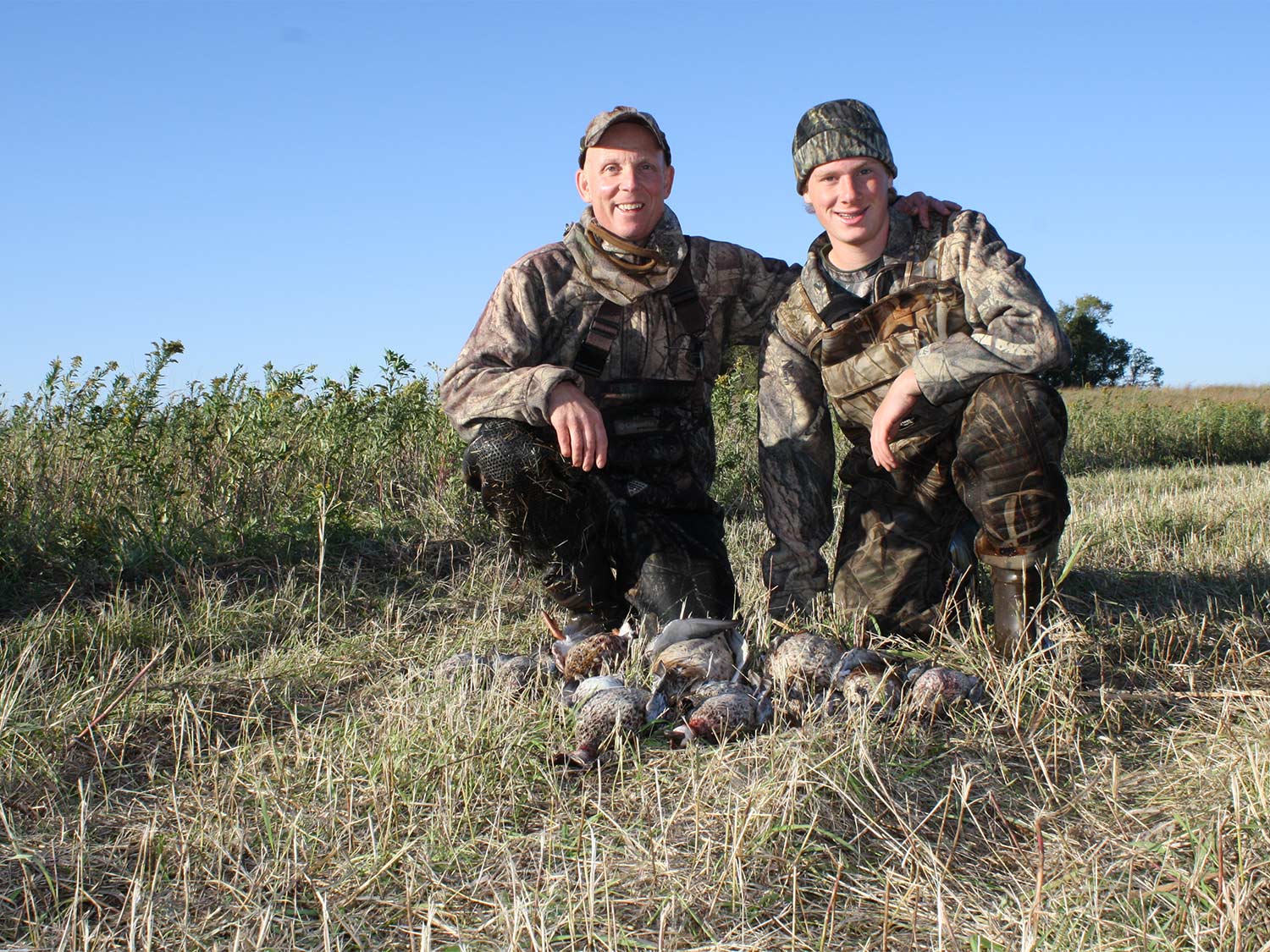
In areas with many holes of small water, watch where ducks are flying and settling, then pick up your spread and go set up there. The birds will flush upon your arrival, but if you toss out a few decoys and make a quick hide within a minute or so, you can often pull a small flock or two back in.
Versatility: While mobility is all about being able to pick up and go at a moment’s notice, versatility is about adjusting your approach and setup to reflect the water and the situation at hand.
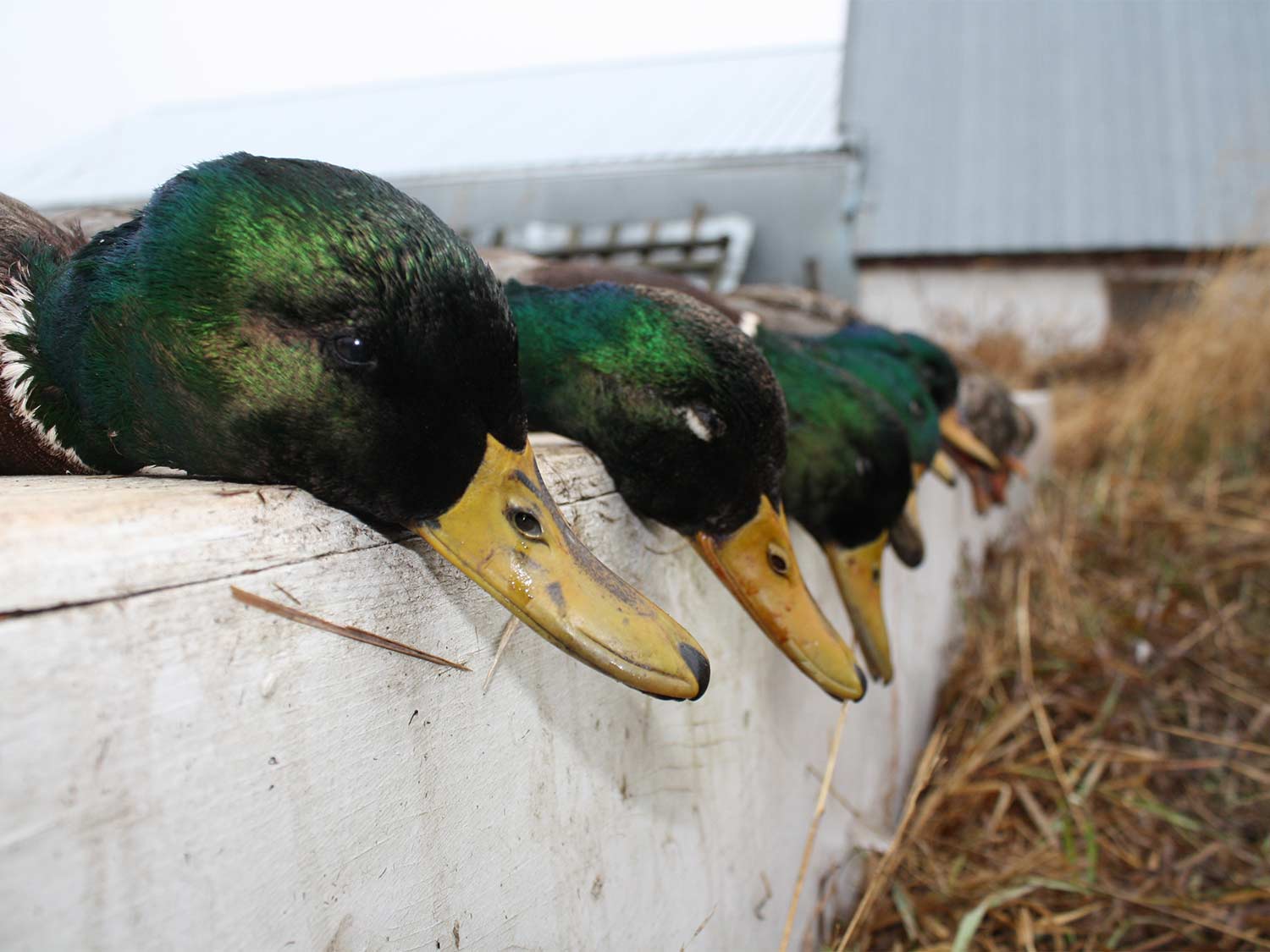
One year when the South Dakota prairie was exceptionally dry, A lot of big water had been turned into small water but there were not a lot of places for a hunter to hide. Any water left in potholes was far from the ring of cattails and separated by a band of cracked dirt. The solution? I’d throw a few decoys into whatever puddle that remained, and when the cattails were too far away, I’d lie down and cover up with a couple of gray sheets I bought at the Dollar Store and sullied up with real, local dirt. It was lights out on the gadwalls that streamed in.
